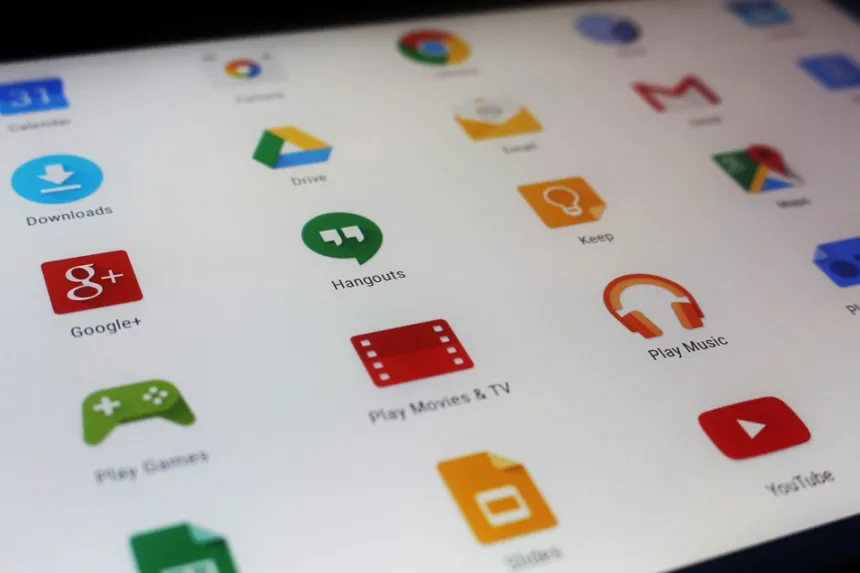In an era where real-time insights are becoming increasingly essential, live data streaming is emerging as a critical technology for businesses and developers alike. From enhancing customer experiences to improving operational efficiency, live data streaming allows organizations to capture, process, and act on data instantly, providing them with a significant competitive advantage. Developers, meanwhile, are tasked with building and maintaining systems that handle vast, continuous streams of data with speed and precision.
This article delves into the rise of live data streaming, exploring its impact on businesses, the opportunities it offers developers, and the reasons it has become such a transformative force in today’s digital landscape.
What is Live Data Streaming?
Live data streaming refers to the continuous, real-time transmission of data from sources such as websites, IoT devices, sensors, and financial transactions to various systems or platforms for immediate processing and analysis. Unlike batch processing, where data is collected, stored, and then analyzed, streaming allows data to be analyzed as it flows, often within milliseconds of being generated.
Technologies like Apache Kafka, Amazon Kinesis, and Apache Flink are commonly used to manage and process large-scale data streams. These platforms allow businesses to handle high volumes of real-time data across distributed systems, enabling them to derive immediate insights and take swift action.
The Importance of Live Data Streaming for Businesses
As organizations shift towards more data-driven decision-making processes, the ability to analyze real-time data has become increasingly vital. Businesses that leverage live data streaming can gain instant insights, enabling them to respond rapidly to changes in market conditions, customer behavior, and operational challenges. Here are several ways in which live data streaming is revolutionizing the business landscape:
1. Real-Time Decision Making
In today’s competitive market, timely decision-making can make or break a business. With live data streaming, businesses can monitor key metrics and events in real-time, allowing them to take proactive steps based on current data rather than relying on delayed reports. For example, a financial services company can track and respond to stock market fluctuations as they happen, while an e-commerce business can adjust its pricing or promotional offers based on live customer interactions.
2. Enhanced Customer Engagement
Personalization has become a key factor in customer retention and satisfaction. Live data streaming enables businesses to engage with customers in real time, offering personalized experiences based on their actions and preferences. For instance, streaming data from customer interactions on a website can help businesses tailor product recommendations, promotions, or content in the moment, creating a more engaging and relevant customer experience.
Real-time engagement is particularly important for businesses in industries such as e-commerce, media, and entertainment, where customer interactions are frequent, and the competition for attention is fierce.
3. Optimized Operational Efficiency
Operational efficiency is another area where live data streaming offers significant benefits. By continuously monitoring internal processes, supply chains, and equipment, businesses can identify inefficiencies, prevent disruptions, and make real-time adjustments to optimize performance. For example, logistics companies can use live data from GPS trackers and sensors to optimize delivery routes, reduce fuel consumption, and meet delivery deadlines more effectively.
In manufacturing, streaming data from IoT sensors embedded in machinery allows companies to perform predictive maintenance, preventing costly downtime by addressing issues before they escalate.
4. Predictive Analytics and AI
Live data streaming also powers predictive analytics, enabling businesses to make forward-looking decisions based on real-time trends. By integrating AI and machine learning models into their data streams, businesses can predict customer behaviors, product demand, and market shifts. For example, retailers can predict which products will be in high demand based on live customer browsing data and adjust their inventory accordingly.
Additionally, real-time fraud detection systems in banking and e-commerce use streaming data to analyze transactions as they occur, flagging suspicious activity instantly and reducing the risk of fraud.
Opportunities for Developers in Live Data Streaming
For developers, live data streaming presents both a challenge and an opportunity. Building applications that can handle massive amounts of continuous data in real time requires advanced technical skills and expertise in distributed systems, data management, and real-time processing. However, the potential for innovation in this space is enormous, offering developers the chance to create solutions that redefine industries.
1. Building Real-Time Applications
Developers working with live data streaming need to design applications that are capable of ingesting, processing, and analyzing data as it flows in real-time. These applications must deliver low-latency responses, ensuring that insights can be acted upon instantly. Examples include real-time dashboards, stock trading platforms, social media monitoring tools, and customer interaction systems that update in real-time based on user activity.
A key focus for developers is ensuring the seamless handling of data streams, regardless of the scale or complexity of the data being processed.
2. Managing High Data Volumes
Live data streaming often involves processing large volumes of data from multiple sources simultaneously. Developers must design systems that can scale effectively to handle spikes in data volume while maintaining low latency and high performance. This requires leveraging technologies like Kafka, Flink, and Spark Streaming, which allow developers to manage and distribute real-time data across multiple servers, ensuring scalability and reliability.
Handling real-time data at scale also involves managing system resources efficiently, ensuring that the infrastructure can process continuous data without performance bottlenecks.
3. Ensuring Data Consistency and Accuracy
One of the primary challenges of live data streaming is ensuring data consistency and accuracy. Since data is processed in real-time, any delays, failures, or errors can lead to incomplete or inaccurate insights. Developers must implement robust error-handling mechanisms, fault tolerance, and data reconciliation processes to ensure the integrity of the data streams.
This often involves using techniques like event sourcing, where all changes in the system are recorded as a series of events, making it easier to replay and recover from failures without losing valuable data.
4. Integrating with AI and Machine Learning
Live data streaming offers exciting opportunities for developers to integrate AI and machine learning models directly into their applications. By processing real-time data through AI algorithms, developers can build systems that offer predictive insights, automate decision-making, and enable real-time personalization.
For example, developers can create recommendation engines that use live customer behavior data to offer personalized content or products in real time. Similarly, machine learning models can be used to identify patterns in streaming data, enabling automated responses to market trends, customer interactions, or operational issues.
Real-World Applications of Live Data Streaming
Live data streaming is being applied across a wide range of industries, transforming the way businesses operate and engage with customers. Here are some real-world examples of how different sectors are using this technology to their advantage:
1. Financial Services
The financial industry is one of the largest adopters of live data streaming, using it for stock market analysis, risk management, and fraud detection. Trading platforms rely on real-time data to provide accurate pricing, execute trades instantly, and analyze market trends. Additionally, financial institutions use streaming data to monitor transactions in real-time, identifying fraudulent activity as it occurs.
2. E-commerce
E-commerce companies leverage live data streaming to monitor customer behavior in real time and provide personalized product recommendations, dynamic pricing, and instant promotions. Streaming data from user activity helps businesses identify trends, optimize their marketing strategies, and increase sales conversions.
3. Healthcare
In healthcare, live data streaming plays a crucial role in patient monitoring and remote diagnostics. Wearable devices and IoT sensors continuously collect data on a patient’s health, transmitting it to healthcare providers for real-time analysis. This allows doctors to monitor a patient’s condition in real time, respond to emergencies, and make data-driven decisions about treatment.
4. Media and Entertainment
Streaming platforms, social media networks, and online gaming companies use live data streaming to deliver real-time content, recommendations, and personalized experiences. For example, video streaming services analyze user viewing habits in real time to offer personalized recommendations, while online games use live data to adjust gameplay based on player behavior.
How to Get Started with Live Data Streaming
For businesses looking to adopt live data streaming, it’s important to take a strategic approach to implementation. Here are some steps to get started:
1. Define Your Use Cases
Start by identifying the areas where real-time data can have the most impact on your business. Whether it’s improving customer experiences, optimizing operations, or gaining deeper insights into market trends, understanding your specific use cases will help guide your implementation strategy.
2. Choose the Right Technology Stack
There are several platforms available for live data streaming, including Apache Kafka, Amazon Kinesis, Google Cloud Dataflow, and more. Choose a platform that aligns with your business’s scalability, performance, and integration needs.
3. Collaborate with Developers
Implementing live data streaming requires close collaboration between business teams and developers. Developers will need to build systems that can handle the volume and complexity of your data streams while ensuring that the technology aligns with your business goals.
4. Integrate Data Analytics
To maximize the value of your live data streams, invest in data analytics and machine learning capabilities. By applying real-time analytics to your streaming data, you can gain actionable insights and make more informed decisions.
Conclusion
The rise of live data streaming is revolutionizing the way businesses operate and interact with customers, offering unprecedented opportunities for real-time decision-making and innovation. For developers, live data streaming presents a unique set of challenges, but it also opens the door to building groundbreaking applications that can redefine industries. As live data streaming becomes more accessible and integrated into business strategies, companies that leverage this technology will gain a significant edge in the market, while developers will play a crucial role in bringing these real-time solutions to life.
To stay up to date with the latest news and trends, To learn more about our vision and how we’re making a difference, check out OC-B by Oort X Media.




